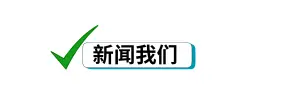In the dynamic world of search engine optimization, understanding the nuances of backlinks is paramount. Backlinks, fundamentally, are links from one website to another. They act as votes of confidence in the eyes of search engines like Google. However, not all backlinks are created equal. Their origin and purpose classify them into two critical categories: external backlinks and internal backlinks. Both play distinct yet equally vital roles in shaping your site’s authority, visibility, and overall search engine performance. Mastering these two pillars of link-building is essential for any digital strategy aimed at ranking higher on Google and driving organic traffic. This guide delves into the specifics of each, explaining their importance and offering actionable strategies for effective implementation.
Understanding the Power of External Backlinks
An external backlink, often referred to as an inbound link, is a hyperlink from a different domain pointing to your website. These links are a cornerstone of off-page SEO, signalling to search engines that other reputable sources vouch for your content. When high-authority websites link to your pages, it significantly boosts your site’s perceived trustworthiness and relevance. Google’s algorithms interpret these links as endorsements, which can directly influence your search engine rankings. The quality of these links is far more important than their quantity. A single link from a highly authoritative and relevant website holds more weight than dozens from low-quality or spammy sites. Understanding what constitutes a good external backlink is crucial for effective link building. Factors like domain authority, topical relevance, and anchor text all contribute to the value passed.
Strategies for Acquiring High-Value External Backlinks
Building a robust external backlink profile requires strategic effort and a focus on earning, rather than just asking for, links. One of the most effective strategies involves creating exceptional, evergreen content that naturally attracts links. This could include in-depth guides, original research, compelling infographics, or unique data sets. When your content provides significant value, other websites are more inclined to reference it. Outreach is another key component. Identifying relevant websites and proposing guest posts, offering unique insights, or suggesting your content as a resource can yield positive results. Broken link building is also a smart tactic, where you find broken links on other sites and suggest your content as a replacement. Always prioritize white-hat SEO techniques. Avoid practices like purchasing links or participating in link schemes, as these can lead to severe penalties from search engines and damage your site’s reputation.
The Role of Internal Backlinks in SEO Architecture
While external backlinks bring authority from outside your domain, internal backlinks work within your website to build a strong, navigable, and semantically relevant structure. An internal backlink is a link from one page on your website to another page on the same website. These links serve multiple critical functions for both users and search engines. For users, internal links help them navigate your site, discover more content, and enhance their overall experience. For search engines, they help spiders crawl your site more efficiently, identifying the relationships between different pieces of content. They also distribute “link equity” or “PageRank” throughout your site. This means that important pages can pass authority to less authoritative, but still important, pages. A well-executed internal backlink strategy is vital for optimizing your site’s architecture. It ensures that valuable content receives the necessary visibility and link juice to rank effectively, as highlighted in “Mastering Your Site Structure with Internal Backlinks.”
Optimizing Your Internal Backlink Strategy
To maximize the impact of your internal links, several best practices should be employed. Firstly, use descriptive and keyword-rich anchor text. This helps both users and search engines understand what the linked page is about. Avoid generic anchors like “click here.” Secondly, ensure contextual relevance. Links should naturally flow within the content, guiding the user to related information. Thirdly, prioritize deep linking. Instead of always linking to your homepage or main category pages, link to specific, relevant sub-pages and older content that could benefit from renewed attention. Regularly auditing your internal links is also crucial. This helps identify broken links, orphaned pages, or pages that are over-linked, allowing you to refine your strategy. Utilize SEO tools to visualize your site’s internal link structure and identify opportunities for improvement. A thoughtful internal linking strategy enhances user engagement and strengthens your entire domain.
Synergistic SEO: How External and Internal Backlinks Collaborate
For truly comprehensive SEO success, external and internal backlink strategies must work in harmony. External backlinks bring in the initial authority and trust signals from external sources. These signals, once on your site, are then distributed and amplified through a robust internal linking structure. Imagine external links as pipelines bringing in fresh water (link equity) to your reservoir (your website). Your internal links then act as the distribution system, ensuring that this water reaches every part of your garden (your content). When a page receives a powerful external backlink, a strong internal linking strategy ensures that the benefits of that link are spread to other important pages on your site. This synergistic approach builds a powerful, topically relevant content hub that search engines highly value. It demonstrates deep expertise on a subject, enhancing your overall site authority and potential for higher rankings across a broader range of keywords.
Final Thoughts on Backlink Mastery
The journey to mastering SEO is continuous, and backlinks remain a fundamental element. Both external and internal backlinks are indispensable for achieving high search engine rankings and establishing your website as an authoritative source. Focus on earning high-quality external links through valuable content and ethical outreach. Simultaneously, build a logical and user-friendly internal linking structure that distributes authority and enhances discoverability. By understanding and strategically implementing both types of backlinks, you create a robust foundation for sustainable organic growth. Always remember, the goal is to provide value to users and signal relevance to search engines, building a truly authoritative online presence.
